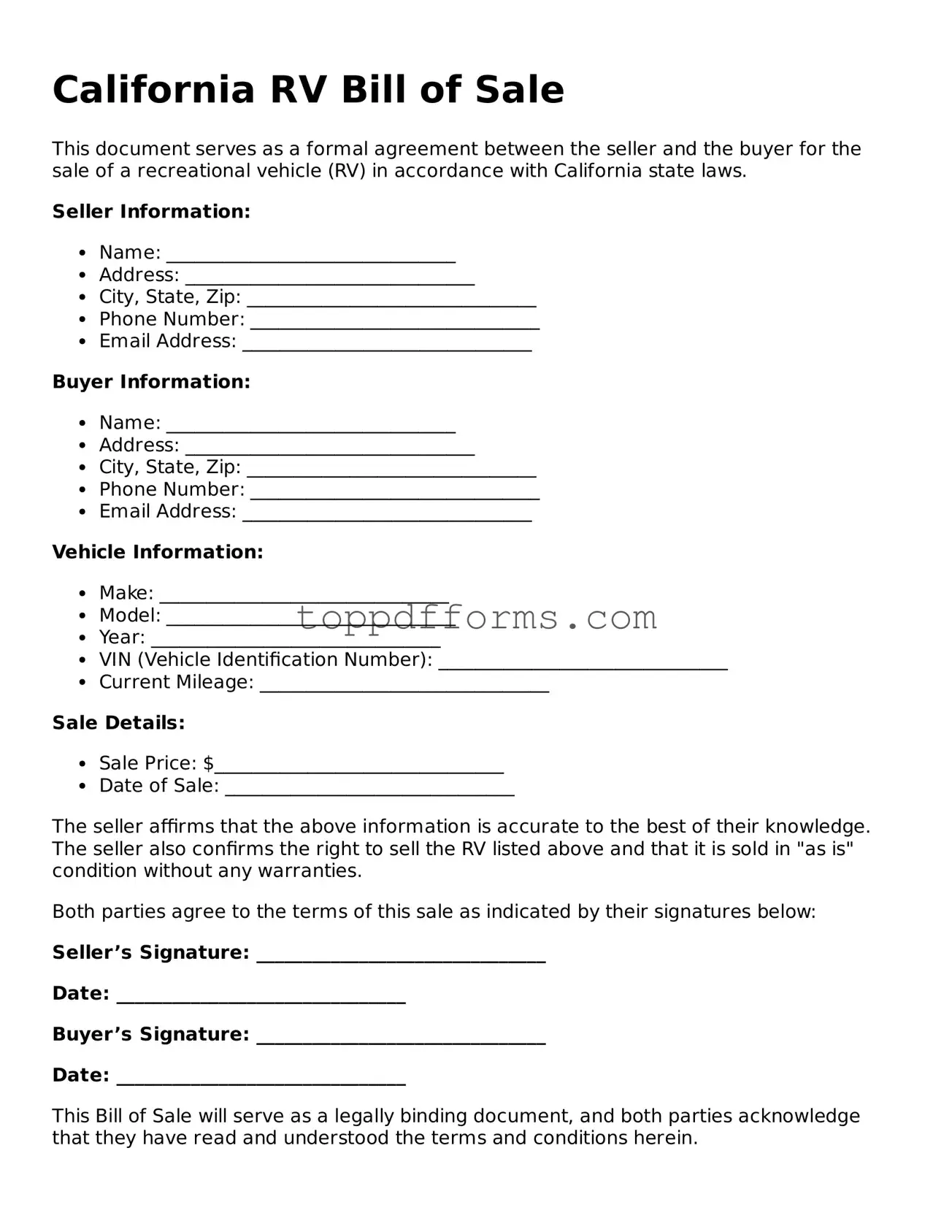What is a California RV Bill of Sale?
A California RV Bill of Sale is a legal document that records the sale of a recreational vehicle (RV) from one party to another. This document serves as proof of the transaction, detailing important information about the RV, the buyer, and the seller. It typically includes the RV's make, model, year, and Vehicle Identification Number (VIN), along with the sale price and date of the transaction. Having a Bill of Sale is essential for both parties, as it helps protect their rights and can be used for registration purposes with the California Department of Motor Vehicles (DMV).
Is a Bill of Sale required in California for RV transactions?
While a Bill of Sale is not legally required for every RV transaction in California, it is highly recommended. This document provides a clear record of the sale, which can be beneficial for both the seller and the buyer. It can help resolve any disputes that may arise regarding ownership or the condition of the RV. Additionally, when registering the RV with the DMV, having a Bill of Sale can simplify the process and ensure that all necessary information is documented.
What information should be included in the RV Bill of Sale?
The RV Bill of Sale should include several key pieces of information to ensure it is complete and effective. This includes the full names and addresses of both the buyer and seller, the RV's make, model, year, and VIN, the sale price, and the date of the transaction. It is also advisable to include any terms of the sale, such as whether the RV is sold "as-is" or if any warranties are provided. Both parties should sign the document to acknowledge their agreement to the terms.
Can I create my own RV Bill of Sale?
Yes, you can create your own RV Bill of Sale. There are no specific state-mandated forms for this document in California, so you have the flexibility to draft one that suits your needs. However, it is important to ensure that all necessary information is included and that the document is clear and concise. Many online templates are available that can help you get started, but make sure to customize them to reflect the specifics of your transaction.
What should I do after completing the RV Bill of Sale?
After completing the RV Bill of Sale, both the buyer and seller should keep a copy for their records. The seller should also provide the buyer with any additional documents required for registration, such as the title and any maintenance records. The buyer will need to take the Bill of Sale to the DMV to register the RV in their name. It is advisable for the seller to notify the DMV of the sale to protect themselves from any future liabilities associated with the RV.
